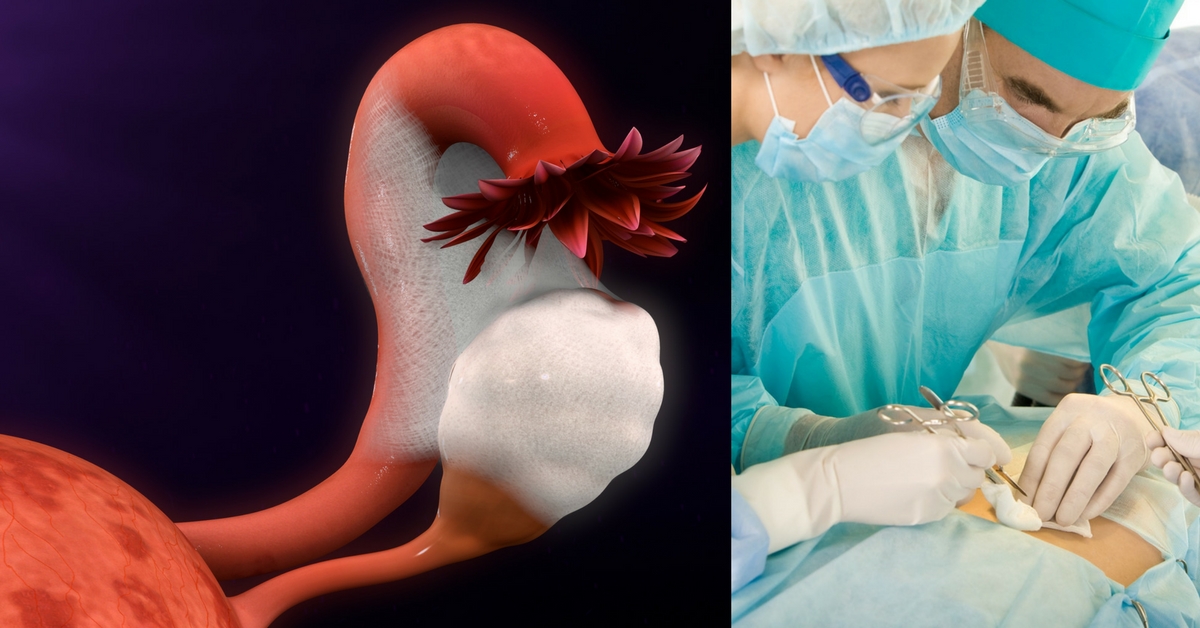Hysterectomy is the surgical removal of the uterus (the womb). In the United States, hysterectomy is the second most common operation for women, surpassed only by cesarean section. Surgeons perform some 600,000 hysterectomies a year in this country. It’s estimated that one in three American women will undergo a hysterectomy before she turns 60.

Why Have a Hysterectomy?
A woman might have a hysterectomy to treat a number of gynecologic disorders, including:
- Abnormal bleeding: changes in a woman’s normal menstrual cycle marked by heavy to light bleeding between periods or excessive bleeding during periods. Abnormal bleeding is a symptom of an underlying condition such as poor nutrition, hormonal imbalance or tumor growth.
- Fibroids: noncancerous tumors or growths that form on the inside or outside wall of the uterus. They are not always evident.
- Uterine prolapse: the collapse or sliding of the uterus from its normal location in the pelvis into the vagina. Surgery is called for when symptoms-including chronic pain, frequent urination or bladder infections-interfere with a woman’s normal life.
- Endometriosis: is cells similar to the lining of the uterus that are found in other areas of the body. This condition is often painful.
- Gynecologic cancer: abnormal growth of cells in the female reproductive system. Uterine cancer is the most common gynecologic cancer in the United States. About 35,000 new cases and 3,000 deaths are recorded each year.

How Is a Hysterectomy Performed?
Two surgical techniques are used to remove parts of or the complete uterus: open surgery and laparoscopic surgery. In traditional open surgery, surgeons make a large incision, about 5 to 7 inches long, in the abdomen to access and take out the uterus. With laparoscopic surgery, surgeons insert small specialized tools, including a camera and cutting and grabbing instruments, through several small incisions to reach and remove the uterus.
Both types of surgery typically take several hours and require a hospital stay of three or four days and a home recovery period of up to four weeks. Usually, hysterectomy pain of short or long duration follows the operation.

What Are the Risks of a Hysterectomy?
A hysterectomy carries the normal risks of major surgery:
- Bad reaction to the anesthesia
- Allergic reaction to medicines
- Heavy bleeding
- Blood clots in the lungs or legs
- Infection
- Pain caused by scarring
A hysterectomy also carries its own risks, including early menopause if the ovaries are removed; injury to nearby organs, such as the bowel, bladder or rectum; and hysterectomy pain.
Hysterectomy pain can develop throughout the pelvic and abdominal regions and even in the lower back. Hysterectomy pain is caused by adhesions, or scar tissue, that forms naturally and quickly on delicate tissue in the pelvic region that is cut or burnt during the operation.
The adhesions act like threads of glue to hold together the injured tissue. Sometimes the adhesions join the incision sites to neighboring organs, such as the bowels or bladder. This binding can cause painful pulling or tightness inside the body.

How Is Hysterectomy Pain Treated?
Medication is the first treatment for hysterectomy pain. If the pain is severe and chronic, additional surgery may be performed to remove the pain-causing adhesions. However, even with the most advanced surgical techniques, new adhesions form. This often leads to a cycle of surgery/adhesion formation/surgery that can go on for years.
Alternative treatments for eliminating adhesions include herbal remedies and a form of physical therapy that breaks down the scar tissue, permanently eliminating it.
Source: https://www.womenshealthnetwork.com/hysterectomy/vaginalandpartialhysterectomyoptions.aspx





